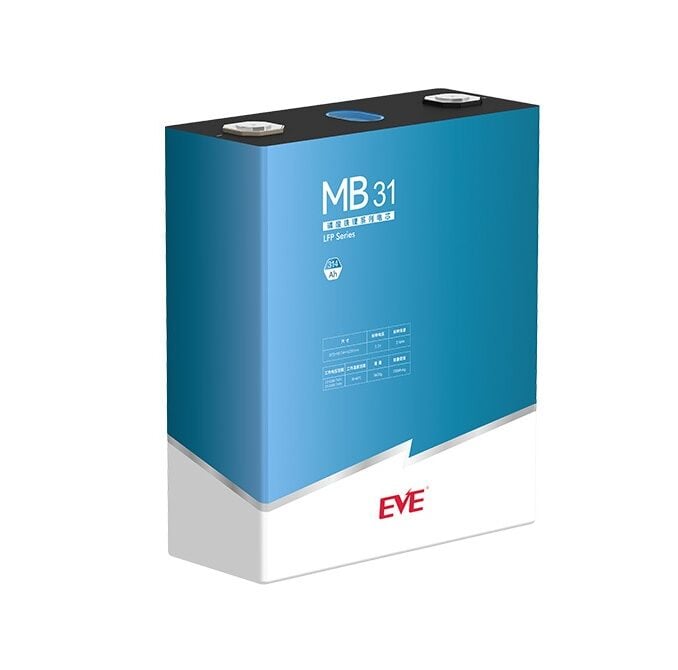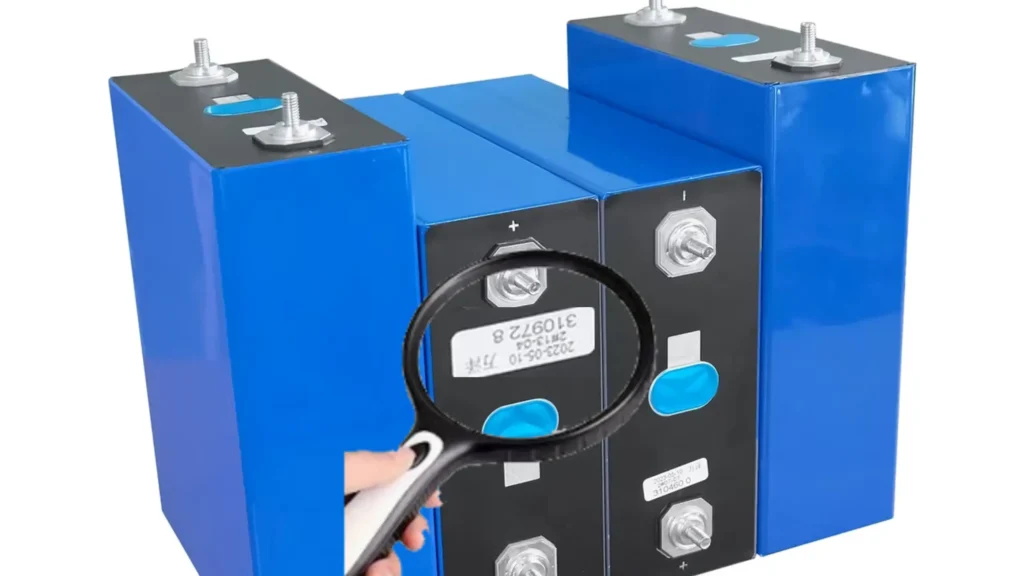Again in March 2025 we have been notified that there is a lot of misrepresentation of battery grades within the Industry, not just from china, but in Australia, there are business, purchasing cells from Alibaba, and claiming Automotive Grade or A+ grade.
Because of this we are going to further differentiate what grades are available from various supply chains and we will try to explain why.
Why Do Some “330Ah A Grade” Cells Test at 315–325Ah?
When you buy LiFePO4 battery cells, like those rated at 330Ah, you expect them to deliver that capacity. But in reality, not all cells labeled “330Ah A Grade” perform as promised. Two businesses in Australia, for example, sell these cells at prices way below what’s realistic—sourcing them from the cheapest suppliers on Alibaba. I’ve heard from their customers, via phone calls, that these cells often fall short, testing at just 315–325Ah. From my experience, their Alibaba source is new and unreliable, which explains a lot. Here’s why this happens and what’s really going on with cell grades.
Capacity and Quality Vary—It’s Normal, but Hidden
Every batch of LiFePO4 cells from a factory—like EVE or others—has a natural spread in performance. In a production run of, say, 800,000 cells, capacities and internal resistance (IR) aren’t identical across the board. Some cells hit above their rated capacity (e.g., 335Ah for a “330Ah” cell), while others fall below (e.g., 315Ah). The same goes for IR, which affects how well a cell handles charge and discharge. Factories sort these cells into grades based on this spread, but shady sellers exploit the gaps.
The Real Grading Breakdown
Based on what I’ve seen, there are roughly 3 or 4 quality levels for these cells, even if they’re all labeled “330Ah” or “A Grade”:
- High-End Matched Cells (Top 10–20%)
- Capacity: Usually over 335Ah.
- Quality: Carefully selected, matched for consistency, and balanced for low IR.
- Use: Premium applications like EVs or high-voltage packs (e.g., 16s 51.2V systems).
- Cost: Expensive because they’re the cream of the crop and it takes manual selection and effort—only the best from the batch.
- Middle-High (True A Grade / Automotive)
- Capacity: 330–335Ah.
- Quality: Solid performers with good IR, meeting strict standards for automotive or high-quality battery packs.
- Use: Factory-built systems, EVs, or grid storage—reliable but not perfectly matched like the top tier.
- Cost: Fairly priced, reflecting their quality.
- Middle-Low (A- Grade)
- Capacity: 320–330Ah.
- Quality: Still functional but from the lower end of the “A Grade” range. Slightly higher IR or less consistency. Sometimes they might have appearance defects.
- Use: Often sold as “A Grade” to DIYers or budget buyers, but not ideal for critical systems. A DIY can repair their own battery in place, a prebuilt battery to a customer who cannot DIY, this is not suitable. cost of repair is high.
- Cost: Cheaper, and this is where misrepresentation starts creeping in.
- B Grade (Defective or Low-End)
- Capacity: Always Under 330Ah, often 310–325Ah or less.
- Quality: May have internal flaws (e.g., higher IR) or visible defects (e.g., dents).
- Use: Fine for low-stress setups like 12V RV batteries, but they degrade faster,
- Cost: Dirt cheap—perfect for sellers looking to undercut the market.
The Misrepresentation Game
Have a quick look and dont forget to COME BACK and finish what you were learning.
EVE MB31 QR Code Dramas
https://diysolarforum.com/threads/batch-of-cells-eve-mb31-with-serial-number-different-from-qr-code.99860
EV Grade vs A Grade vs A- Terminology on Alibaba – from pretty trusted sources on this forum
https://diysolarforum.com/threads/rayfromtx-video-reduce-the-risk-when-buying-lifepo4-from-alibaba-is-misleading.45401/
QSO – Andy Specials
https://diysolarforum.com/threads/eve-280k-lifepo4-cells-from-qso-shenzhen-qishou-technology.69614/
When will Andy learn?
Batteries are funny things, when they are in the first 10, 20 or even dare I say it, 90% of their life, you can really tell if they are good or bad. You only know when they fail. A review on Youtube is pretty silly most of the time, because the cells they are testing are new. I mean capacity is an indicator, but its far from being the only indicator. And most often, the cells coming in via Alibaba are well over advertised. Be it only 10 or 20ah and a couple of Milli Ohms, that is enough to knock years of your investement. And its more the hassle of having to try to fix it, sourcing a single cell, its still not that easy. We keep cells here, But we charge $600 for anyone who didnt purchase their cells from us in the first, place, we don’t owe you support or our time, and these days, 1 or 2 hours helping you for no profit, its not something we should be doing. We should be helping our own customers.
Hell, we get charged hundreds of dollars an hour by all the trades people we engage, so we should also be hundreds of dollars an hour in this inflationary mess of a country this past few years.
Those two Australian businesses? They’re buying from the bottom of this pile—likely A- or eveb possible B Grade cells from an untrustworthy Alibaba seller. This supplier is new, and I know from being approached multiple times but there suppliers, and dealing with them that their cells don’t hold up. They might take B Grade cells (say, 315–325Ah), slap a “330Ah A Grade” label on them, and ship them out. Sometimes they even re-laser QR codes to fake authenticity. It’s a quick profit—buy low, sell higher (but still below legit A Grade prices), and hope buyers don’t test them properly.
Customers who’ve called me confirm this: their cells test at 315–325Ah, not 330Ah. Why? Because these aren’t from the top or even middle of the batch—they’re the leftovers. Genuine A Grade cells (330–335Ah) cost more to produce and source, so selling them at rock-bottom prices isn’t realistic. These businesses can only offer those deals by cutting corners with dodgy stock.
Why the Gap Isn’t Obvious
Manufacturers rate cells at a nominal capacity—like 330Ah—based on ideal conditions. But real-world testing (e.g., at high discharge rates or over time) reveals the truth. The high-end cells exceed that mark, true A Grade hits it, and the lower tiers fall short. Without detailed GENUINE factory data (which isn’t public), or proper testing gear, buyers can’t tell until it’s too late. That’s why these businesses get away with it—most people don’t check.
The Bottom Line
If a “330Ah A Grade” cell tests at 315–325Ah, it’s not A Grade—it’s A- or B Grade being passed off as better. Those Australian sellers are sourcing the cheapest cells from an unreliable Alibaba supplier, and their low prices reflect that. True A Grade (330–335Ah) comes from the middle-high tier of a batch, while the top 10–20% (over 335Ah) are reserved for premium matched packs. Don’t be fooled by a bargain—check the source, test the cells, and match the grade to your needs.
Different grades A+ or Automotive Grade or A- and B grade LFP cells? What we call them as of March 2025
A+ Hand Picked
Unique to LiFePo4 Australia – Exclusive!
By Pre-Order Only – This product can take 2-3 months (we need to wait for EVE factory (Head Office) to produce and hand pick for us to specification.
Best cells available, hand selected, premium cells for the longest life and highest C rate charging and discharging
Lowest (IR) Internal Resistance
Best Voltage Recovery
Best Self-Discharge Rate
Best capacity at full C rate
We will provide a Certificate of Authenticity and some extra test results to prove the quality of this product
7 Year Warranty is dependant on your use/application, and must be agreed before purchase to strict conditions such as temperature, BMS management settings, the Depth of Discharge.
A Grade aka Automotive Grade Cells
Matched, Highest Quality Cells for Demanding Applications
Purpose: Designed for electric vehicles (EVs) and high-discharge applications, especially in high-voltage series packs where uniformity is critical.
Stress Tolerance: A+ Grade cells endure high charge/discharge rates, making them ideal for EV acceleration and regenerative braking.
Internal Resistance (IR): Consistently low IR simplifies balancing and enhances longevity.
Testing & Documentation: Manufacturers like EVE provide detailed reports, including IR, capacity, and voltage recovery over time.
Quality Assurance: Rigorously tested to meet strict performance standards.
Warranty: Backed by a 5-year Australian warranty.
Series Battery Considerations:
In a 16-cell 51.2V pack, if one cell has lower capacity (e.g., 200Ah vs. others at 300Ah), the pack’s usable capacity drops to the lowest cell’s level (200Ah), resulting in a 33% loss. This highlights the importance of uniform cell grading.
2024 Note: Improved manufacturing and reduced costs have made A Grade cells more affordable and viable for energy storage applications, especially for 16s 51.2V systems.



A- Grade Cells (Revised march 2025)
Usually from platforms like Alibaba, Aliexpress – generally targeted at DIY customers. We can buy these at a discount in bulk.
What some other Australian stores call them
A+ or Automotive Grade
Purpose: Sometimes A- grade are actually B Grade cells modified (e.g., re-lasered QR codes) to appear as A Grade. Capacity and consistency are lower than genuine A Grade.
Cost: Rebranding typically adds $1–2 USD per cell, allowing them to be sold as A Grade.
Warning: Many A- Grade cells on the market are actually rebadged B Grade cells, making it difficult for consumers to discern true quality.





B Grade Cells (sometimes used or dismantled)
Very Cost-Effective, Less Demanding Applications
Purpose: Can be suitable for low-stress applications like lower discharge 12V batteries for RVs, caravans, or 4x4s. Often used
Performance: Initially, B Grade cells may have similar capacity and IR to A+ Grade cells but degrade faster under heavy use.
Testing & Documentation: These cells lack official manufacturer reports but undergo third-party capacity testing.
Longevity: Suitable for low C-rate solar energy storage; they can last thousands of cycles if not stressed.
Market Reality: True B Grade cells are rarely sold openly and are often rebadged as A Grade. Reports suggest that 80%+ of large-format cells meet A Grade standards, but yield rates are inflated by manufacturers, There is always a variance from each batch of cells.
For example some production runs can be as large as 800,000 cells at EVE factories for MB31. From this 800,000 cells there will be a spread of capacity and performance, with some reaching 335ah, some 330ah, some 325ah and some as low as 315ah.
Cost & Warranty:
B Grade cells are 35-50% cheaper than genuine A Grade cells. Reputable sellers may provide Australian-backed warranties, sometimes unknowingly for rebadged cells.









Summary
A+ Grade Matched: Best for high-performance, difficult to repair completed batteries with warranty.
For example 16s 51.2V systems and above; unmatched quality and longevity.
For example we can sometimes request the best of the production run, for example EVE MB31 cells only above 335ah.
A Grade Automotive – Good for high quality factory built batteries, middle to high performance of the production run, up to 80% of a production run, usually used in Grid container batteries, high quality brand name battery packs, EV’s, and other high performance battery packs.
A- Grade (Alibaba A+ or Automotive) or other, very commonly sold as A Grade (Auto), to DIY community, as they have the ability to replace a weak cell, they dont have the ability to properly test the cells at high C rates, and therefor cannot really identify good from bad quality cells.
The major factor here is they are not fit for purpose in expensive warrantied batteries where the cost to repair might be very significant, for example,
B Grade: Affordable option for low-demand applications but with lower reliability and lifespan.

